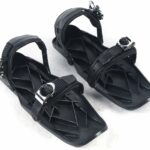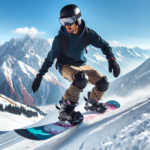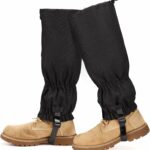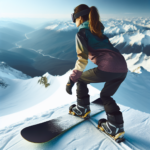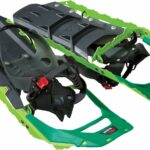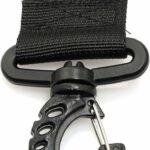You’ve probably found yourself at the top of the mountain, looking down at the snow-dusted slope before you. In your hands, you might have been holding a snowboard or skis, ready to embark on a thrilling plunge downhill, but did you ever stop to wonder which mode of snowy descent is faster? In this article, “What Is Faster, A Snowboard Or Skis?” you’ll have your curiosity piqued as we explore the science behind both winter sports accessories and finally answer the age-old question of speed supremacy on the slopes.
Understanding the Mechanics
When you’re in the world of snow sports, speed is often a topic of discussion. The thrill and adrenaline rush associated with cruising down the slopes make skiing and snowboarding enjoyable and invigorating. But have you ever wondered about the mechanics involved in these sports?
Basic principles of skiing and snowboarding
Skiing and snowboarding revolve around a few basic principles. Balance, weight distribution, momentum, and control. In skiing, you’re standing sideways with both feet strapped to a single board. You slide down the hill while maintaining your balance. On the other hand, skiing involves two separate skis for each foot. You point straight down the slope and control your speed and direction by shifting your weight and turning your skis.
The science of gravity and motion
Both skiing and snowboarding rely heavily on the principles of gravity and motion. Gravity pulls you down the slope, while your mass (or more accurately, your inertia) wants to keep you moving at a constant speed. This interplay of forces, combined with the friction between your equipment and the snow, determines how fast you go.
Shape and Design Differences
Are you more interested in the gear used in snow sports? Read on.
The shape and length of skis vs. snowboards
The shape and length of skis and snowboards differ significantly. Skis are typically longer and narrower, allowing for better balance and faster speeds. Snowboards, on the other hand, are wider and shorter, featuring a more symmetrical shape which encourages controlled turns and improved balance in various snow conditions.
How design contributes to speed
The design of skis and snowboards greatly contributes to their speed. The sleek, elongated design of skis helps decrease air and snow resistance, allowing for greater speeds. In contrast, the wider, shorter shape of a snowboard increases surface area contact with the snow, resulting in more friction and generally slower speeds.
Material of Equipment
It’s not just about what you’re on – it’s also about what they’re made of.
Common materials used in skis
Ski manufacturers often use a mix of materials when crafting their products. These can include wood, fiberglass, carbon fiber, and metal resulting in skis that are lightweight but stiff, aiding in speed and control.
Common materials used in snowboards
Similar to skis, snowboards are often made from materials like wood, fiberglass, and carbon fiber. Manufacturers opt for a softer design to promote better maneuverability and control for the rider.
How material affects speed
The materials used in ski and snowboard construction play a significant role in determining speed. Harder, stiffer materials like metal or carbon fiber generally provide faster speeds due to less friction with the snow. Softer materials, like wood, provide a slower yet more controlled ride.
Surface Contact and Friction
The relationship between your skis or board and the snow is all about surface contact and friction.
Understanding friction in snow sports
Friction is the force that resists motion between two surfaces in contact, in this case, it’s between your skis or board and the snow. In both skiing and snowboarding, reducing friction is key to increasing speed.
Differences in surface contact between skiing and snowboarding
Skiing and snowboarding have distinct differences when it comes to surface contact with the snow. Skis have two separate points of contact, resulting in less friction and higher speeds. In contrast, snowboards have a larger contact surface area which results in more friction and generally slower speeds.
Rider’s Skill Level and Technique
How proficient you are at skiing or snowboarding can also make a significant difference in your speed.
The impact of the rider’s expertise on speed
A skier or snowboarder’s skill level drastically impacts their speed. Experienced riders are able to better manage their balance and weight distribution. They know when to tuck in for aerodynamics or lean into a turn to maintain speed.
Differences in riding technique
Skiing and snowboarding techniques also impact speed. Skiers, for example, can tuck their bodies to minimize wind resistance and increase speed. Snowboarders generally stand side-on, which may limit their top speed.
The Role of Weight
Body mass, or weight, is another factor that contributes to speed in snow sports.
How weight influences speed in snow sports
In both skiing and snowboarding, heavier riders tend to go faster. This is because a greater mass increases the gravitational pull down the slope, which translates into higher speeds.
Weight distribution in skiing vs. snowboarding
Weight distribution also plays a role in determining speed. In skiing, your weight is distributed evenly across two skis. In contrast, on a snowboard, your weight is centered on one board, which can slow you down.
Snow and Weather Conditions
The environment you’re in can also influence your speed.
Effect of snow conditions on speed
The type of snow you’re riding on can greatly influence speed. Fresh, powdery snow tends to slow skiers and snowboarders down due to increased friction. Conversely, icier conditions usually yield faster speeds.
Impact of weather on skiing and snowboarding speed
Weather conditions can also affect your speed on the slopes. Wind, for example, can either hinder or boost your speed, depending on its direction. Cold temperatures can make the snow icy and fast, while warmer weather can lead to slower, slushier conditions.
Slope and Terrain
The nature of the slope and terrain you’re riding on plays an integral part in your speed.
The effect of slope steepness on speed
The steeper the slope, the faster you’ll likely go. Gravity pulls you down the slope and the steeper it is, the stronger that pull becomes.
How different terrains affect speed for skis and snowboards
Terrain type also influences speed. Smooth, groomed runs are generally faster, while uneven, rough terrain can slow you down. Likewise, obstacles like trees or rocks can force you to slow and maneuver around them.
Aerodynamics and Wind Resistance
One cannot overlook the role of aerodynamics and wind resistance in snow sports speed.
Understanding aerodynamics in skiing and snowboarding
Aerodynamics refers to the study of how air interacts with moving bodies. In skiing and snowboarding, a rider can manipulate their body shape to minimize wind resistance and maximize speed.
Effect of wind resistance on speed in skiing vs. snowboarding
Wind resistance can substantially impact speed in snow sports. In skiing, you can adopt the “tuck” position to reduce your surface area and thus decrease wind resistance. For snowboarders, the side-on stance usually results in higher wind resistance, thus reducing speed.
Safety Considerations
While seeking speed, it’s crucial to consider safety as the priority.
Going fast on skis or a snowboard can be exhilarating, but it comes with risks. These include colliding with other people, trees, or barriers, not to mention the risk of losing control and falling.
Safety gear and its influence on speed
While safety gear like helmets and body armor doesn’t necessarily increase your speed, it can make you feel more confident and protected, allowing you to push your limits a little more.
In conclusion, various factors, including equipment design, material, terrain, weather conditions, and rider skill, contribute to the speed differences between skiing and snowboarding. It might be safe to say that under similar conditions, skiing could potentially offer faster speeds than snowboarding. However, speed isn’t everything in snow sports – fun, control, and safety are what ultimately matter.
- What Snowboard Bindings Should I Get? - January 23, 2024
- What Size Screws For Snowboard Bindings? - January 23, 2024
- How To Snowmobile On Water? - January 23, 2024

